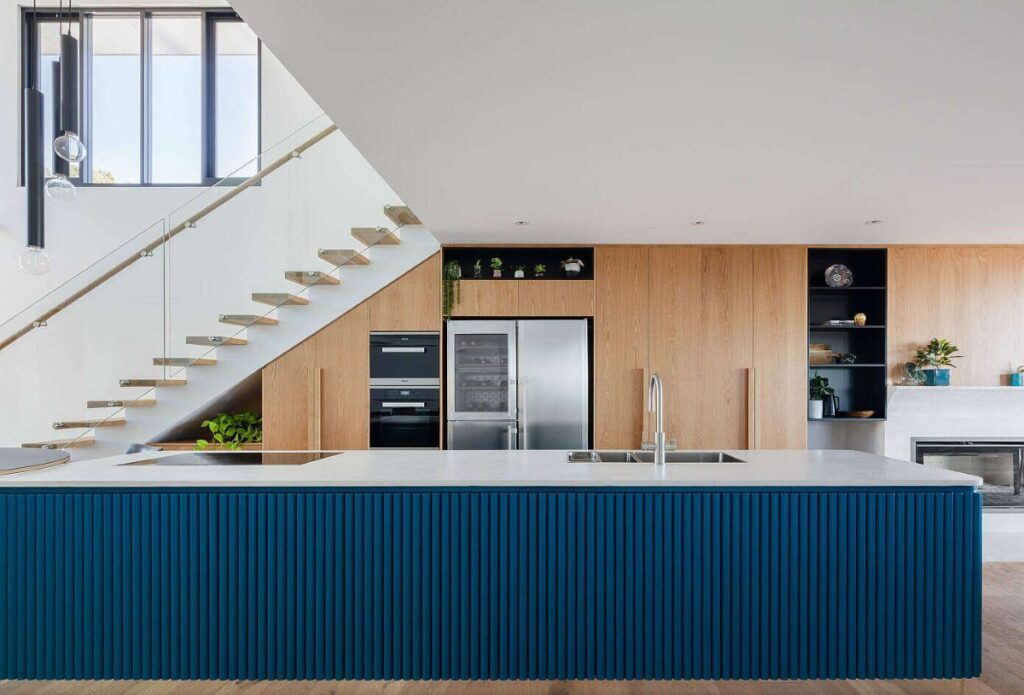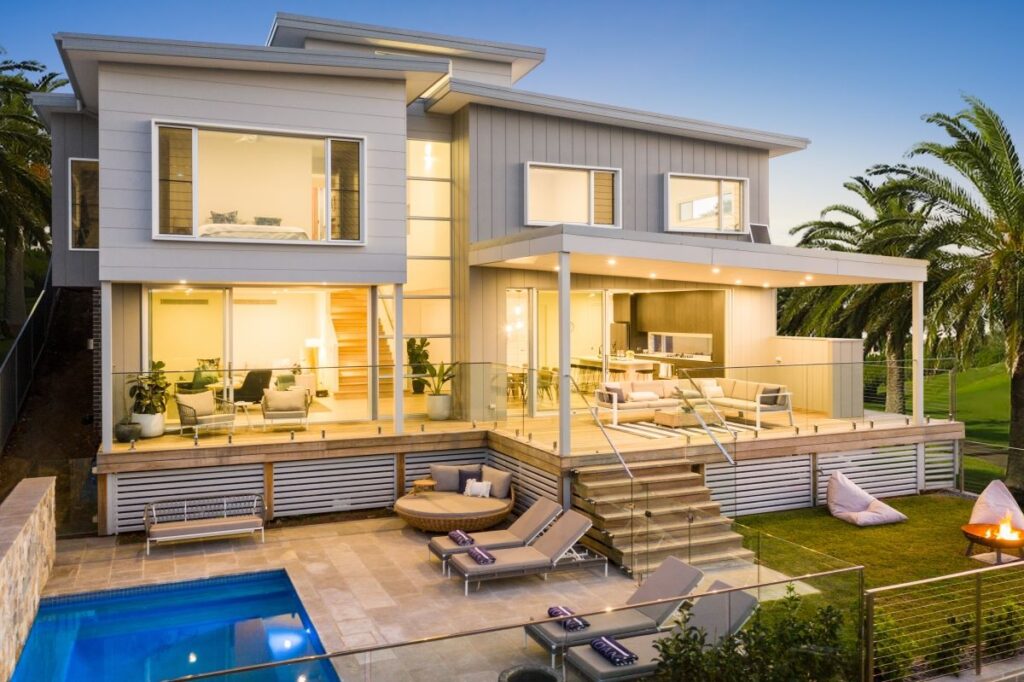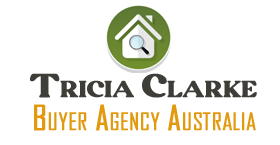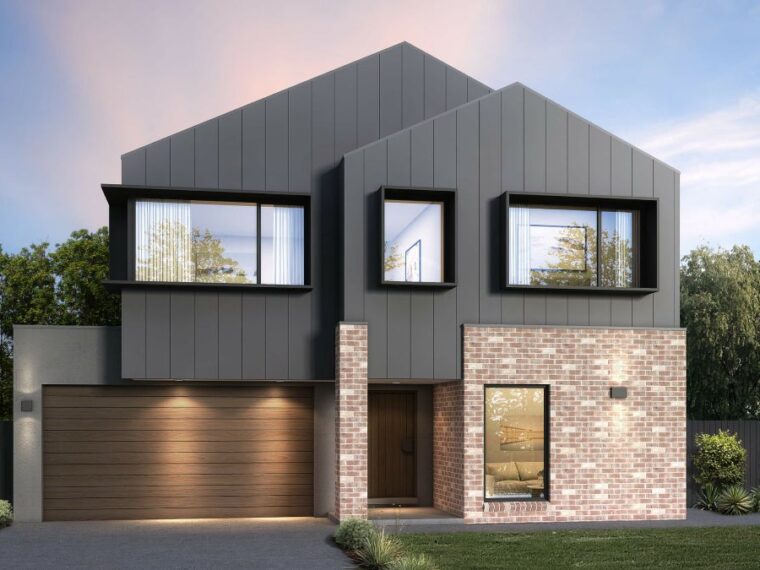Kiama’s dramatic coastal environment presents both unique opportunities and distinct challenges for residential architecture. This picturesque region along New South Wales’ coastline experiences strong ocean winds, salt air exposure, and variable weather patterns that demand thoughtful design approaches. The natural beauty of clifftop locations and beachside settings creates an inspiring backdrop for homes, yet requires architects to carefully balance aesthetic vision with environmental resilience.
Sustainable new home design has become essential in this coastal region, where environmental consciousness meets practical necessity. Rising energy costs, climate change concerns, and growing awareness of building impacts on local ecosystems drive homeowners to seek eco-friendly solutions. The coastal location amplifies these needs, as homes must withstand harsh marine conditions whilst minimising their environmental footprint.
Kiama residential architects serve as crucial guides in this complex landscape, bringing specialised knowledge of both sustainable design principles and local environmental conditions. These professionals understand how to create homes that respond intelligently to coastal challenges whilst incorporating energy-efficient systems, natural materials, and passive design strategies.
Their expertise extends beyond technical requirements to encompass the art of creating spaces that connect residents with the stunning natural environment. Through careful material selection, strategic orientation, and innovative design solutions, architects in Kiama are reshaping how coastal homes can achieve both environmental responsibility and exceptional living quality.
What Unique Environmental Factors Do Kiama Residential Architects Consider in Their Designs?
Kiama’s coastal climate presents distinct challenges that shape every architectural decision. The region experiences salt-laden air, strong ocean winds, and high humidity levels that can damage conventional building materials over time. Temperature fluctuations between seasons require homes to handle both summer heat and winter cold whilst maintaining comfortable indoor conditions year-round.
Wind protection becomes a critical design element as architects must shield homes from prevailing coastal breezes without blocking beneficial natural ventilation. Strategic positioning of structures, careful window placement, and the incorporation of protective landscaping elements help create comfortable outdoor spaces whilst reducing structural stress from constant wind exposure.
Durable materials form the backbone of successful coastal construction. Kiama residential architects select materials that resist corrosion, moisture damage, and UV degradation:
- Treated timber species that withstand salt air exposure
- Natural stone that provides thermal mass and weather resistance
- Corrosion-resistant metals for structural elements and fixtures
- High-performance glazing systems designed for coastal conditions
Local environment adaptation extends beyond material selection to encompass site-specific design strategies. Architects study prevailing wind patterns, solar orientation, and seasonal weather variations to position buildings for optimal performance. Elevated foundations protect against potential flooding, whilst roof designs shed water efficient and resist uplift forces. These considerations ensure homes remain comfortable and structurally sound throughout their lifespan.
How Do Kiama Residential Architects Incorporate Sustainability into New Home Designs?
Passive solar design forms the foundation of sustainable architecture in Kiama’s coastal environment. Architects position homes to capture winter sun through north-facing windows whilst providing adequate shading during summer months. Strategic placement of eaves, pergolas, and landscaping elements creates natural temperature regulation without relying on mechanical systems. Visit https://www.yourhome.gov.au/passive-design to get more about passive design.
Energy-efficient systems integrate seamlessly into architectural plans through careful coordination of heating, cooling, and lighting solutions. Architects specify high-performance insulation, double-glazed windows, and LED lighting systems that reduce energy consumption by up to 60% compared to conventional homes. Heat pump technology and solar panels become architectural features rather than afterthoughts, with roof angles and orientations designed to maximise renewable energy generation.
The selection of natural materials and low-toxicity materials reflects both environmental responsibility and health consciousness. Architects favour:
- Timber from sustainable forests for structural elements and cladding
- Stone sourced locally to reduce transport emissions and complement the coastal landscape
- Clay products including bricks and tiles that provide thermal mass and natural breathability
These materials create homes that age gracefully whilst maintaining excellent indoor air quality. Clay-based finishes and natural timber eliminate harmful chemical emissions common in synthetic alternatives, creating healthier living environments for families.
Architects integrate these sustainable elements through thoughtful design that considers the entire building lifecycle, from construction through to eventual renovation or demolition.
How Do Residential Architects Improve Indoor Comfort and Air Quality?
Kiama residential architects play a crucial role in designing sustainable new homes that go beyond just being energy-efficient. They focus on creating healthier living spaces by carefully choosing materials and using specific design techniques.
Prioritising Indoor Air Quality
One of the key aspects of their work is to prioritise indoor air quality. They achieve this by:
- Using low-VOC paints that minimise harmful emissions
- Opting for formaldehyde-free adhesives to avoid toxic substances
- Selecting natural finishes that do not release harmful chemicals
Implementing Effective Ventilation Strategies
Ventilation is essential for maintaining a healthy indoor environment. Kiama architects employ various strategies to ensure proper airflow throughout the house:
- Cross-ventilation systems: By strategically placing windows and openings, these systems can capture the coastal breezes of Kiama and create natural airflow patterns that eliminate stagnant air.
- Stack ventilation: Clerestory windows and roof vents are designed to encourage warm air rising and exiting through upper openings while drawing in fresh air through lower inlets.
Maximising Natural Light Penetration
Natural light has numerous benefits for both physical and mental well-being. To maximise sunlight entering the home, architects carefully consider:
- Large north-facing windows that allow winter sun but reduce summer heat
- Light wells and skylights that brighten up interior spaces without compromising insulation
- Internal courtyards that bring daylight deep into floor plans
Connecting with Nature through Biophilic Design
Biophilic design principles aim to establish a strong connection between occupants and nature. Kiama architects incorporate elements such as:
- Living walls filled with greenery
- Indoor planters bringing plants inside
- Seamless transitions between indoor and outdoor areas
These design choices not only enhance indoor comfort but also promote overall well-being by fostering a closer relationship with the natural environment.
How Do Kiama Residential Architects Balance Aesthetic Appeal with Functionality in Sustainable Homes?
Spatial planning forms the foundation of successful sustainable home design, where Kiama architects create spaces that serve multiple purposes without compromising visual appeal. These professionals design open-plan living areas that maximise natural light distribution whilst maintaining distinct zones for different activities. The strategic placement of rooms considers both daily routines and seasonal changes, ensuring spaces remain comfortable year-round.
Functional design extends beyond interior layouts to embrace outdoor living spaces that define coastal lifestyle. Architects integrate terraces as essential components rather than afterthoughts, creating seamless transitions between indoor and outdoor environments. These elevated platforms serve as entertainment areas, reading nooks, and observation decks for ocean views, adding both practical value and architectural interest to the home’s silhouette.
Gardens become integral design elements that enhance both sustainability and beauty. Architects position vegetable patches and herb gardens near kitchen windows for convenient access whilst creating attractive green vistas from interior spaces. Native plant selections reduce maintenance requirements and water consumption, supporting environmental goals without sacrificing visual impact.
Contemporary living demands drive innovative solutions where storage systems hide within custom joinery, and multi-purpose furniture adapts to changing needs. Architects design built-in seating with integrated storage, window seats that double as reading areas, and kitchen islands that function as dining spaces. These thoughtful details maintain clean aesthetic lines whilst maximising space efficiency in coastal homes where every square metre counts.

What Regulatory Standards Must Kiama Residential Architects Comply With in Sustainable Home Projects?
Kiama residential architects navigate a complex web of mandatory regulations designed to ensure homes meet strict environmental and safety standards. The BASIX assessment stands as the cornerstone requirement, mandating specific targets for both water efficiency and energy efficiency in all new residential developments.
BASIX Requirements
The Building Sustainability Index requires architects to demonstrate:
- Energy efficiency targets through thermal performance calculations
- Water efficiency measures including rainwater harvesting and greywater systems
- Greenhouse gas reduction strategies integrated into design plans
Bushfire Safety Compliance
Kiama’s proximity to bushland creates additional regulatory challenges. Architects must incorporate:
- Bushfire Attack Level (BAL) assessments for properties in designated zones
- Fire-resistant building materials and construction methods
- Defendable space requirements around structures
- Emergency access and evacuation considerations
Ensuring Compliance Throughout Design and Construction
Architects maintain regulatory compliance through systematic processes:
- Early assessment of site-specific requirements during initial design phases
- Documentation preparation that clearly demonstrates compliance measures
- Coordination with certifiers to validate design solutions
- Construction oversight to ensure built outcomes match approved plans
The regulatory framework shapes every design decision, from material selection to building orientation. Architects must balance these mandatory requirements with client aspirations and site constraints, creating homes that satisfy both legal obligations and sustainable living goals. This regulatory expertise becomes essential when designing coastal properties that face unique environmental pressures.
How Do Residential Architects Manage the Entire New Home Design Process in Kiama?
The Role of Kiama Residential Architects in Sustainable New Home Design extends far beyond creating beautiful drawings. These professionals orchestrate every phase of the building journey, ensuring sustainable principles remain at the forefront from concept design through to final completion.
The process begins with detailed site analysis and client consultations. Architects assess the coastal conditions, soil composition, and natural features whilst understanding their clients’ vision for sustainable living. This foundation shapes the initial concept design, where environmental considerations merge with lifestyle requirements to create homes that respond to Kiama’s unique coastal environment.
Construction management becomes crucial as architects coordinate with specialised contractors and suppliers who understand sustainable building practices. They select tradespeople experienced with:
- Natural material installation – timber, stone, and clay applications
- Energy-efficient system integration – solar panels, efficient HVAC, and smart lighting
- Weather-resistant construction techniques – appropriate for coastal wind and salt exposure
Client collaboration remains constant throughout the process. Architects facilitate regular meetings to ensure the evolving design aligns with both environmental values and practical needs. They translate technical sustainability concepts into understandable benefits, helping clients make informed decisions about material choices, energy systems, and spatial arrangements.
Quality control measures ensure every construction phase meets the established sustainability standards, with architects conducting regular site inspections to verify that sustainable design intentions translate into built reality.
What Innovations Are Kiama Residential Architects Bringing to Sustainable Housing Design?
Kiama’s coastal architects are leading the way with innovative housing designs that go beyond traditional building methods. Here’s a look at some of the groundbreaking ideas they’re implementing:
1. Smart Glass Technology
With the introduction of smart glass technology, windows can now automatically adjust their tint based on the intensity of sunlight. This means homeowners can enjoy stunning ocean views while also reducing their cooling costs.
2. Living Walls and Green Roofs
Architects are incorporating living walls and green roofs into their designs. These features not only add aesthetic appeal but also serve practical purposes such as capturing rainwater, filtering air, and providing natural insulation against harsh coastal weather conditions.
3. Modular Construction Techniques
The way sustainable homes are built has been transformed by modular construction techniques. Instead of constructing everything on-site, prefabricated components are manufactured off-site and then brought to the location for assembly. This method reduces waste by up to 40% and allows for precise engineering that maximises energy efficiency.
4. Adaptive Facades
To combat the effects of prevailing winds and salt spray, architects are designing adaptive facades that can respond to these elements. This ensures that homes remain resilient in the face of challenging weather conditions.
5. Integrated Solar Arrays
Solar panels are often seen as an eyesore on rooftops, but architects are finding ways to integrate them seamlessly into their designs. By disguising solar arrays as architectural elements, they can maintain the visual appeal of a building while still harnessing renewable energy.
6. Native Landscaping
Water scarcity is a growing concern in many regions, including Kiama. That’s why architects are opting for native landscaping that requires minimal irrigation. By using plants that are naturally adapted to the local climate, they can create beautiful outdoor spaces without putting additional strain on water resources.
7. Permeable Driveways
Stormwater runoff can lead to erosion and pollution in coastal areas, but architects have found a solution: permeable driveways. These surfaces allow rainwater to infiltrate into the ground instead of running off into drains or waterways, helping to manage stormwater effectively.
8. Micro-Wind Turbines
In addition to solar systems, architects are also incorporating micro-wind turbines into their designs. These small wind turbines are specifically designed for coastal conditions and can generate electricity even when there’s little sunlight available.
9. Resilient Design for Climate Change Adaptation
As climate change continues to pose threats such as rising sea levels and increased storm intensity, architects are being proactive in their approach. They’re specifying materials that can withstand these challenges and creating flexible spaces within homes that can adapt to changing family needs.
These innovations position Kiama at the forefront of sustainable coastal architecture, creating homes that serve as models for environmentally conscious development. You may like to visit https://realitypi-property-inspectio-on.icaros.app/why-interior-design-kiama-services-are-essential-for-a-seamless-build/ to get why interior design Kiama services are essential for a seamless build.

The Future Looks Bright for Sustainable Coastal Living With Kiama’s Expert Architects Leading The Way!
The Role of Kiama Residential Architects in Sustainable New Home Design extends far beyond simple construction—these professionals shape the future of coastal living through their commitment to environmental stewardship and innovative design solutions. Their expertise transforms the vision of sustainable homes into tangible realities that protect both families and the natural environment.
Engaging a residential architect for your sustainable coastal home project delivers significant advantages:
- Reduced environmental impact through expert material selection and energy-efficient design
- Enhanced comfort via climate-responsive features and natural ventilation systems
- Increased property value from sustainable features that appeal to environmentally conscious buyers
- Long-term cost savings through reduced energy and maintenance requirements
The coastal environment of Kiama demands specialised knowledge that only experienced residential architects possess. These professionals understand how to balance aesthetic appeal with practical functionality whilst meeting strict regulatory requirements for bushfire safety and energy efficiency.
Your sustainable coastal home deserves the expertise of architects who understand both environmental responsibility and beautiful design.
Ready to begin your sustainable home journey? Explore our curated selection of reputable residential architects in Kiama who specialise in sustainable design. These professionals combine local knowledge with innovative approaches to create homes that celebrate coastal living whilst protecting the environment for future generations.

